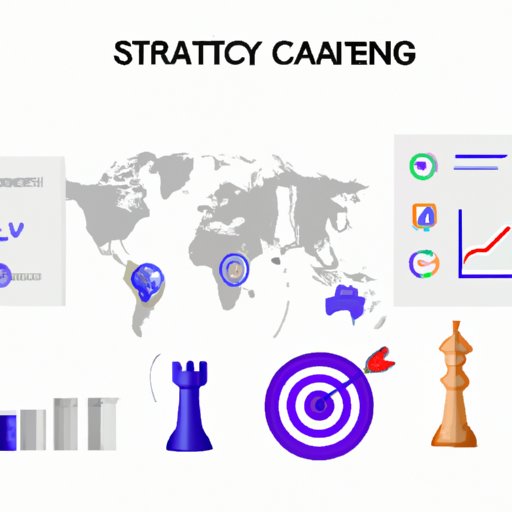Introduction
A business strategy is an overarching plan that guides a company’s operations and helps it achieve specific goals. It involves taking stock of internal resources and capabilities, analyzing external market conditions, and formulating a plan of action to reach desired outcomes. Designing a successful business strategy requires careful consideration of various factors.
Analyze the Market
Before creating a business strategy, it’s important to gain a thorough understanding of the current market. This involves identifying current trends and customer needs, as well as analyzing the competitive landscape. By taking the time to analyze the market, businesses can develop strategies that are tailored to their target audience and positioned to capitalize on emerging opportunities.
Set Goals & Objectives
Once the market has been analyzed, it’s time to set concrete goals and objectives. This includes clarifying desired outcomes and developing measures for success. Goals should be specific, measurable, achievable, relevant, and timely (SMART). Objectives provide the roadmap for reaching those goals and should be based on the research conducted during the market analysis.
Assess Resources & Capabilities
The next step in designing a business strategy is to assess the company’s resources and capabilities. This involves evaluating internal strengths and weaknesses. Companies should take stock of their assets, personnel, and processes to determine which areas need improvement and where they have a competitive advantage.
Develop Action Plan
With the goals and objectives in place, the next step is to develop an action plan. This involves outlining specific steps and establishing a timeline for implementation. The action plan should include details about how the strategy will be implemented, who will be responsible for each task, and how long each step will take.
Monitor Progress
Once the strategy has been implemented, it’s important to monitor progress. This includes tracking performance and adjusting tactics as needed. Businesses should regularly review their strategies to ensure that they are meeting their goals and objectives.
Communicate Strategy
It’s also important to communicate the strategy to staff and stakeholders. This ensures that everyone is on the same page and working towards the same objectives. Companies should provide regular updates and feedback to keep everyone informed and motivated.
Conclusion
Designing a successful business strategy is a complex process. It requires careful analysis of the market, clear goal setting, objective assessment, resource and capability evaluation, action plan development, progress monitoring, and communication. By following these steps, businesses can create a strategy that is tailored to their needs and positioned to succeed.
(Note: Is this article not meeting your expectations? Do you have knowledge or insights to share? Unlock new opportunities and expand your reach by joining our authors team. Click Registration to join us and share your expertise with our readers.)
